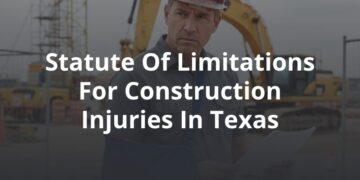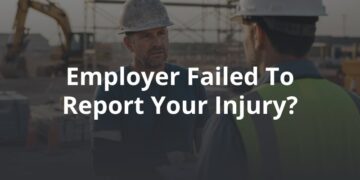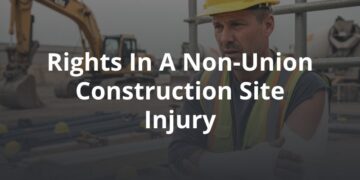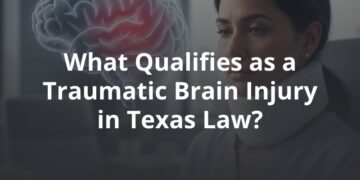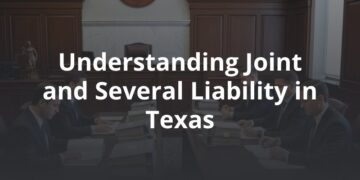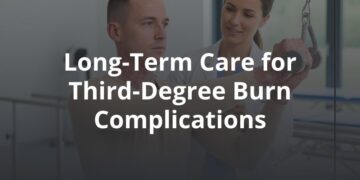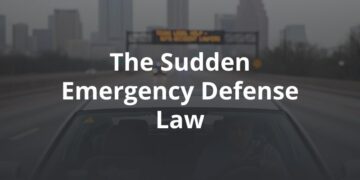For many people, rideshare companies like Lyft and Uber offer a convenient way to get around town without the hassle of fighting traffic, parking, and finding a designated driver when alcohol is involved. However, rideshares also present their own set of issues: drivers are not professionals and may not be covered by corporate insurance policies.
And more cars on the road mean more car accidents; in fact, studies have shown that ridesharing has increased the amount of road fatalities by 2 to 4 percent.
One factor in these accidents is driver fatigue. Driver fatigue is a serious problem for all drivers, as it can lead to poor decision-making, slowed reaction times, and — at its most serious — falling asleep at the wheel. But rideshare drivers are at an especially high risk for these kinds of behaviors.
These drivers are independent contractors, and they commonly begin driving as a way to earn a second income. Drivers worn out from a previous shift at another job often get behind the wheel when they’re feeling less than alert. On rideshare forums, drivers have admitted that they frequently fall asleep behind the wheel. The sheer volume of responses underlines the seriousness of the problem.
Furthermore, drivers typically take to the roads at night, where they can maximize earnings by taking fares traveling to and from bar districts. In fact, the period just after bars close is generally considered a lucrative time for drivers looking to take advantage of surge pricing and high demand. That means that drivers may be working very late into the night — and giving up sleep in order to do it.
Additionally, many drivers are new to the city and unfamiliar with the roads. Relying on GPS systems to navigate them to their destination can result in driver distraction, which can result in serious accidents. And, of course, drivers looking for rides can become distracted by the app itself, which increases the likelihood of distracted driving.
Driving While Fatigued Is as Dangerous as Driving Drunk
According to the National Sleep Foundation, drowsy driving is just as dangerous as driving under the influence. A study produced by AAA’s Foundation for Traffic Safety found that there are an estimated 328,000 accidents involving drowsy driving on average every year. In many cases, these accidents are quite serious. The CDC calculates that around 6,000 fatal crashes annually may be caused by drowsy driving.
The National Highway Traffic Safety Administration (NHTSA) estimates that there were approximately 91,000 police reported accidents in 2017 that could be attributed to drowsy driving, resulting in around 50,000 injuries. The majority of these accidents occurred between the hours of midnight and 6:00 a.m. — in other words, exactly when many rideshare drivers are on the road.
Rideshare Fatigue Is an Urgent Problem
In April 2019, the rideshare driver fatigue problem came to light here in Austin, when a woman captured footage of her rideshare driver nodding off during her ride. And she’s not alone. Dr. Indira Gurubhagavatula, a professor at the Penn State Perelman School of Medicine, says that fatigue and sleeplessness are “inherent safety risks” in the rideshare industry in Austin and everywhere else, particularly since drivers — as independent contractors — are not subject to any type of screening for sleep disorders.
In an official position statement in the Journal of Clinical Sleep Medicine, Gurubhagavatula, along with other members of the American Academy of Sleep Medicine Board of Directors, called on rideshare providers like Lyft and Uber to create better oversight and controls to prevent fatigued driving.
To their credit, rideshare companies have been making strides to at least try to address the issue of driver fatigue. For instance, in 2018, Uber mandated a six-hour rest period for drivers who work twelve hours in a row. To do so, the company installed a feature in its driver application that automatically prevents a driver from accepting more rides after they’ve logged twelve hours of continuous driving.
There are two problems with that regulation, however. One is that it only affects drivers who have been working for Uber for a period of twelve hours. But many drivers are exhausted not because they are putting in long shifts driving, but because they are doing this work on top of working at another job. Furthermore, most drivers aren’t loyal to one rideshare employer. Most drive for both Uber and Lyft, along with any other rideshare apps available in their area. Because drivers are independent contractors, there’s nothing stopping them from switching over to Lyft or another rideshare service once the Uber app switches off.
The bottom line is that the ridesharing industry desperately needs better regulations for drivers — rules that govern driver rest periods regardless of which company the driver happens to be working for. We join the American Academy of Sleep Medicine and others in calling for better measures to address rideshare driver fatigue. Our hope is that rideshare companies will take these appeals to heart and work together to institute better safety policies for their drivers.
Until that happens, however, we are working hard to help rideshare accident victims obtain the compensation they need to pay for injuries and damages in a Lyft or Uber accident — regardless of whether or not driver fatigue was a factor. Uber and Lyft accident settlements, claims, and trials can be complicated, however, so we recommend that all accident victims consult with a qualified Austin Lyft and Uber accident lawyer before deciding how to proceed with their case.
FVF Law’s rideshare accident lawyers can help you understand your legal rights and options in your case — and we offer a free case consultation for all accident victims. Contact us today to learn more.
